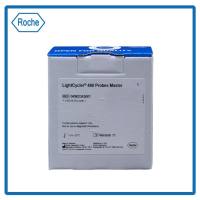Preparation of Human Chromosomal Painting Probes From Somatic Cell Hybrids
互联网
621
Chromosomal in situ suppression (CISS) hybridization with flow-sorted chromosome libraries (FSCL) has provided a very powerful tool in human cytogenetics. This technique allows the painting of specific chromosomes in metaphase spreads and in interphase nuclei (1 –4 ). The usefulness of FSCL is particularly evident, for instance, in identifying the chromosomal origin of de novo unbalanced translocations and marker chromosomes, or, more generally, in characterizing those cytogenetic cases in which the conventional approach based on banding techniques fails to elucidate the chromosomal rearrangement under study (5 ,6 ). These situations are frequently experienced in cancer cytogenetics (7 ,8 ). Painting libraries of human origin have also been utilized to follow the chromosome evolution of primates (9 –11 ). For example, studies where both chimpanzee chromosomes 12 and 13 were painted by the human chromosome 2-specific library have confirmed the origin of this human chromosome from the fusion of two distinct ancestral chromosomes still separated in great apes (12 ).









